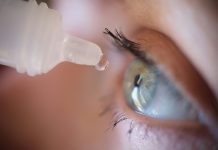
In the past twenty years, despite efforts across the country to manage blood pressure, there has been a significant increase in the number of older adults being admitted to hospitals due to sudden and severe increases in blood pressure.
This trend was particularly notable among senior citizens in the United States, and even more so among Black Americans, especially in the southern states.
Yale University researchers undertook a detailed study to investigate if there had been any improvement in preventing these critical hospital visits for what is known as acute hypertension, or sudden high blood pressure, over the last two decades.
Unfortunately, their findings indicated that there has been no significant progress.
The data examined came from Medicare beneficiaries, specifically those over the age of 65. The researchers found that hospital admissions for severe blood pressure spikes more than doubled from 1999 to 2019.
While the annual rate of hospitalizations for these emergencies rose by 5.6% on average, the increase was even sharper at 6% among Black individuals.
During the later years of the study, from 2017 to 2019, Black patients were found to be three times more likely to be hospitalized for high blood pressure emergencies compared to other groups.
This striking disparity calls for urgent attention and action to prevent serious consequences, such as damage to vital organs, heart attacks, and strokes.
These alarming increases in hospital visits for high blood pressure are particularly prevalent in the Southern United States. This region is often referred to as the “stroke belt” due to its historically high rates of stroke and other heart-related issues.
The term “stroke belt” highlights an area where the occurrence of stroke is much higher than in other parts of the country.
Understanding blood pressure readings is key to recognizing the risks. Blood pressure is deemed high when systolic readings—the top number in a blood pressure measure—consistently reach 130 mm Hg or higher, or when diastolic readings—the bottom number—exceed 80 mm Hg.
These thresholds are set by the U.S. National Heart, Lung, and Blood Institute to guide individuals in monitoring their health.
The increase in hospitalizations linked to high blood pressure emergencies underscores the importance of managing blood pressure effectively.
Addressing this health issue not only involves medical interventions but also requires public health strategies that focus on education, community support, and access to healthcare.
Especially for at-risk populations, such as the elderly and Black Americans in the South, it is crucial to enhance efforts to prevent severe blood pressure spikes.
The findings from this study, published in the journal Circulation by Yuan Lu and colleagues, are a wake-up call to health professionals and policymakers alike.
They highlight the need for more targeted health interventions and continued research into the causes and prevention of high blood pressure crises, especially in vulnerable groups.
Without effective action, the trend of rising hospitalizations due to blood pressure issues is likely to continue, posing a significant challenge to public health systems.
If you care about high blood pressure, please read studies about unhealthy habits that may increase high blood pressure risk, and drinking green tea could help lower blood pressure.
For more information about high blood pressure, please see recent studies about what to eat or to avoid for high blood pressure, and 12 foods that lower blood pressure.
Copyright © 2024 Knowridge Science Report. All rights reserved.



